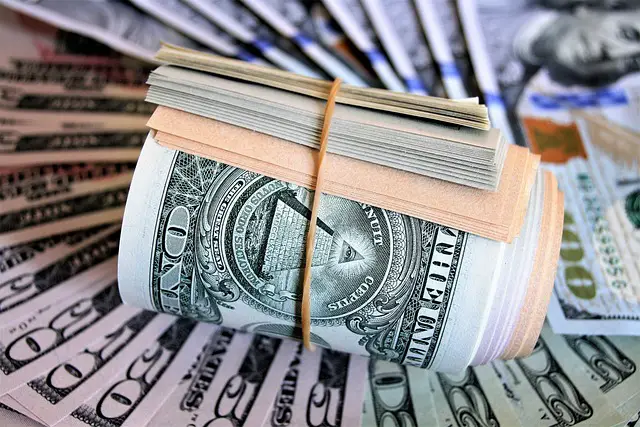What is Money?

What is Money? Money is a medium of exchange that is widely accepted in transactions for goods and services. It can take various forms, including physical currency such as coins and banknotes, digital currency such as electronic transfers and cryptocurrencies, and other financial instruments like stocks and bonds.
How Does Money Work?
Money works as a medium of exchange that facilitates transactions for goods and services. Here’s how it works:
- Money is created and issued by governments and central banks. The supply of money in an economy can have significant impacts on inflation, interest rates, and other economic indicators.
- Money can take various forms, including physical currency such as coins and banknotes, digital currency such as electronic transfers and cryptocurrencies, and other financial instruments like stocks and bonds.
- When someone wants to purchase goods or services, they exchange money for those goods or services. The seller then has the money, which they can use to purchase goods and services for themselves.
- Money also serves as a unit of account, a store of value, and a standard of deferred payment. As a unit of account, money is used to measure the value of goods and services and to keep track of financial transactions. As a store of value, money can be saved and used to make future purchases. As a standard of deferred payment, money is used to settle debts and other obligations.
- The value of money can fluctuate due to changes in supply and demand, inflation, and other economic factors. Central banks and governments have the ability to regulate the money supply to try to maintain stability and control inflation.
Money serves as a critical component of modern economies, facilitating the exchange of goods and services and enabling economic growth and development.
What is the History of Money?
The history of money is a long and complex one that dates back to ancient civilizations. Here’s a brief overview of the history of money:
- Barter: Before money existed, people would trade goods and services directly. This system is known as barter, and it was the primary way of exchanging goods and services for thousands of years.
- Commodity money: Over time, some commodities like salt, cattle, or precious metals, began to be widely used as a medium of exchange. This gave rise to the use of commodity money, where the commodity itself was used as a form of money.
- Coinage: In the 7th century BCE, the Lydians in modern-day Turkey introduced the first metal coins. Coins made from precious metals like gold and silver became a widely accepted form of money in many ancient societies.
- Paper money: In the 7th century CE, the Chinese began to use paper money. This system of currency spread throughout the world and became a popular form of money in many societies.
- Banknotes: In the 17th century, European banks began to issue paper money in the form of banknotes. This system became widely accepted, and banknotes are still used in many countries today.
- Digital money: In recent years, digital money has become a popular form of currency. This includes electronic transfers, online payments, and cryptocurrencies like Bitcoin.
The creation, issuance, and regulation of money have historically been the responsibility of governments and central banks. Today, the supply of money in an economy can have significant impacts on inflation, interest rates, and other economic indicators.
What Are the Types of Money?
There are different types of money that are used in various transactions and financial systems. Here are some of the most common types of money:
- Digital currency, also known as electronic money, is a form of money that exists only in digital form. It includes electronic transfers, online payments, and cryptocurrencies like Bitcoin.
- Physical currency is the traditional form of money in the form of coins and banknotes that are issued by the government and used for transactions.
- Commercial bank money is money that exists in bank accounts, such as checking accounts, savings accounts, and certificates of deposit (CDs). This money can be withdrawn or transferred electronically.
- Central bank money refers to the money that is issued by central banks, such as the Federal Reserve in the United States. It includes physical currency and reserves that banks hold with the central bank.
- Commodity money: Commodity money is a type of money that has intrinsic value, such as gold or silver. This type of money has historically been used as a medium of exchange, but it is less common in modern economies.
- Fiat money is money that has value only because the government has declared it to be legal tender. This includes physical currency and central bank money, which are backed by the government’s ability to regulate the money supply and maintain its value.
- Representative money is a type of money that represents a claim on a physical commodity, such as gold or silver. It includes banknotes that were once backed by gold or silver reserves, but are now backed by the government’s ability to regulate the money supply.
What Are the Pros and Cons of Money?
Like any other economic and social concept, money has its advantages and disadvantages. Here are some of the pros and cons of money:
Pros:
- Facilitates transactions: Money provides a convenient and efficient way to exchange goods and services, making trade and commerce much easier.
- Standardizes value: Money provides a common standard of value that is recognized across a society. This makes it easier to compare and exchange goods and services.
- Enables savings: Money can be saved and invested, providing a means for people to plan for the future and build wealth.
- Promotes economic growth: A stable and efficient monetary system can help support economic growth and development.
Cons:
- Can cause inequality: The unequal distribution of money can create economic disparities and contribute to social inequality.
- Can fuel consumerism: The availability of money can encourage excessive consumption and materialism.
- Can lead to financial instability: The creation and distribution of money can lead to inflation, asset bubbles, and other forms of financial instability.
- Can contribute to corruption: The desire for money can lead to unethical or illegal behavior, including bribery and other forms of corruption.
- Can harm the environment: The pursuit of money can lead to environmental degradation and contribute to climate change.
Money itself is neither good nor bad, it has both positive and negative effects on society, and its impact depends on how it is used and distributed. So it is important to consider the potential consequences of monetary policies and to work toward creating a fair and equitable economic system.


